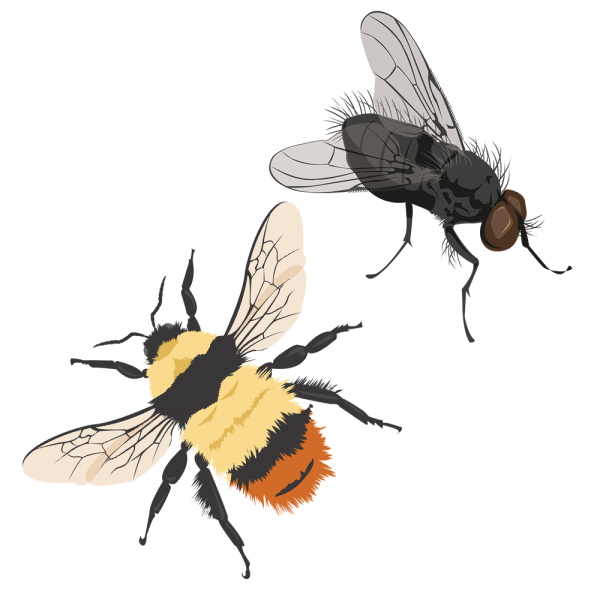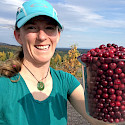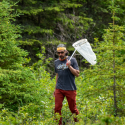Pollinators
Hymenoptera (e.g. Colletidae, Andrenidae, Halictidae, Megachilidae, Apidae) and many families of Diptera
- Ecosystem: Terrestrial
- Species group: Invertebrates
- Publications: Arctic Terrestrial Biodiversity Monitoring Plan

Graphic: José Ortega
Download this table as CSV
| FECs Group | Parameter | Attributes | Priority | Extreme Events | Scale | Complexity | Recurrance | Method | Notes |
|---|---|---|---|---|---|---|---|---|---|
| Pollinators | Diversity | Species richness (estimates) | Essential | Local |
| 3-5 yrs as a minimum; annually if possible | Flower visitation observations, sweep nets, passive sampling, i.e., collections in standardized yellow / white / blue pan traps (grids of traps), vane traps | Advanced complexity for taxonomy. Bees are important in Arctic systems, and taxonomically wellknown but standardized techniques that are quick/efficient are lacking. | |
| Pollinators | Abundance | Relative number per sweep transect, or flower surveys | Recommended | Local |
| Annually | # visitations per unit time; number of specimens per sweep, net transect, or timed sweep-net surveys | Advanced complexity for taxonomy. Difficult to standardize ‘relative abundance’ in monitoring program. | |
| Pollinators | Abundance | Density | |||||||
| Pollinators | Spatial structure | Species presence/absence | Essential |
|
| Annually | # visitations per unit time; number of specimens per sweep, net transect, or timed sweep-net surveys. Plus other published literature, historical collections and consultation with experts. | Advanced complexity for taxonomy. Some pollinator species (e.g. Apidae) could be monitored via community efforts | |
| Pollinators | Phenology | Seasonal activity patterns | Recommended | Local | Advanced | Annually | Indigenous Knowledge, community knowledge | Potentially important but not feasible without specialist and intense monitoring all season. | |
| Pollinators | Demographics | ||||||||
| Pollinators | Ecosystem functions and processes: pollination success, fruit-set, and yield | Fruit set and seeds | Essential | Local |
| 3-5 years as a minimum; annually if possible | Some focal surveys required; Indigenous Knowledge/ community knowledge | This process is facilitated by arthropods, but is not a direct measure of pollinator species; this attribute is a driver for plant fitness | |
| Pollinators | Species richness (estimates) | Essential | Local |
| 3-5 yrs as a minimum; annually if possible | Flower visitation observations, sweep nets, passive sampling, i.e., collections instandardized yellow/white/blue pan traps (grids of traps), vane traps | Bees are important in Arctic systems, and taxonomically well known but standardized techniques that are quick/efficient are lacking. |
Experts
-
Lauren Culler
Observer representative, CBMP Terrestrial, Arthropod Expert NetworkUnited States Observer Organization
 Arctic Council Working Group
Arctic Council Working Group 






